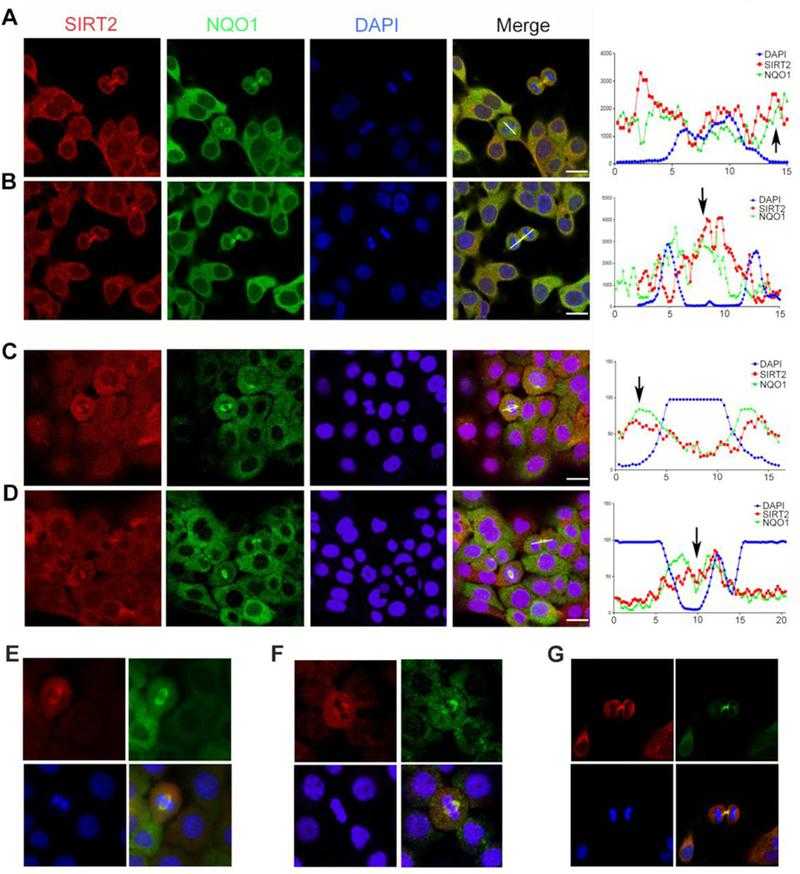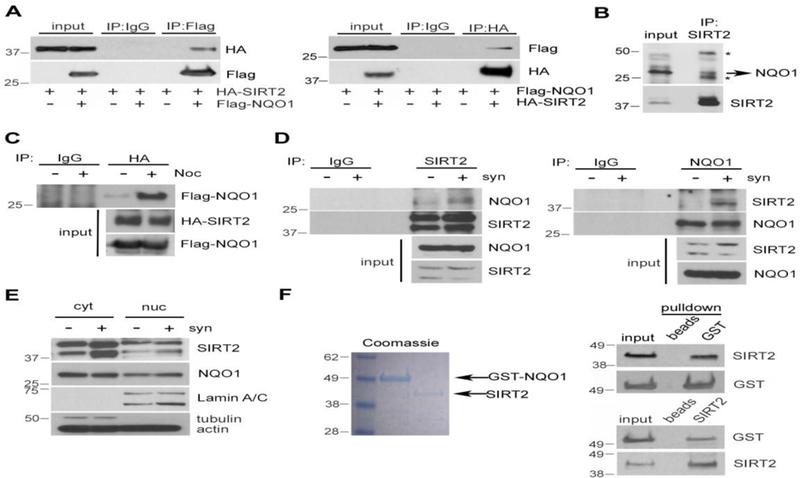Recombinant Human NQO1, GST-tagged
| Cat.No. : | NQO1-1352H |
| Product Overview : | Recombinant Human NQO1 protein, fused to GST-tag, was expressed in E.coli and purified by GSH-sepharose. |
| Availability | January 11, 2026 |
| Unit | |
| Price | |
| Qty |
- Specification
- Gene Information
- Related Products
- Citation
- Download
| Species : | Human |
| Source : | E.coli |
| Tag : | GST |
| Protein Length : | 1-274aa |
| Storage : | The protein is stored in PBS buffer at -20℃. Avoid repeated freezing and thawing cycles. |
| Storage Buffer : | 1M PBS (58mM Na2HPO4,17mM NaH2PO4, 68mM NaCl, pH8. ) added with 100mM GSH and 1% Triton X-100,15%glycerol. |
| Publications : |
NQO1 regulates mitotic progression and response to mitotic stress through modulating SIRT2 activity (2018)
|
| Gene Name | NQO1 NAD(P)H dehydrogenase, quinone 1 [ Homo sapiens ] |
| Official Symbol | NQO1 |
| Synonyms | NQO1; NAD(P)H dehydrogenase, quinone 1; DIA4, diaphorase (NADH/NADPH) (cytochrome b 5 reductase) , NMOR1; NAD(P)H dehydrogenase [quinone] 1; DHQU; DTD; QR1; azoreductase; diaphorase-4; DT-diaphorase; dioxin-inducible 1; menadione reductase; quinone reductase 1; phylloquinone reductase; NAD(P)H:quinone oxireductase; NAD(P)H:quinone oxidoreductase 1; NAD(P)H:menadione oxidoreductase 1; NAD(P)H:Quinone acceptor oxidoreductase type 1; diaphorase (NADH/NADPH) (cytochrome b-5 reductase); DIA4; NMOR1; NMORI; |
| Gene ID | 1728 |
| mRNA Refseq | NM_000903 |
| Protein Refseq | NP_000894 |
| UniProt ID | P15559 |
| Chromosome Location | 16q12-q22 |
| Pathway | Keap1-Nrf2 Pathway, organism-specific biosystem; Metabolism, organism-specific biosystem; Metabolism of amino acids and derivatives, organism-specific biosystem; Oxidative Stress, organism-specific biosystem; Regulation of ornithine decarboxylase (ODC), organism-specific biosystem; |
| Function | NAD(P)H dehydrogenase (quinone) activity; coenzyme binding; cytochrome-b5 reductase activity; electron carrier activity; oxidoreductase activity; protein binding; |
| ◆ Recombinant Proteins | ||
| NQO1-1607HFL | Recombinant Full Length Human NQO1 Protein, C-Flag-tagged | +Inquiry |
| NQO1-4058R | Recombinant Rat NQO1 Protein | +Inquiry |
| NQO1-3717R | Recombinant Rat NQO1 Protein, His (Fc)-Avi-tagged | +Inquiry |
| Nqo1-723R | Recombinant Rat Nqo1 protein, His/sumo-tagged | +Inquiry |
| NQO1-3672H | Recombinant Human NQO1 Protein, His (Fc)-Avi-tagged | +Inquiry |
| ◆ Cell & Tissue Lysates | ||
| NQO1-378HKCL | Human NQO1 Knockdown Cell Lysate | +Inquiry |
| NQO1-3725HCL | Recombinant Human NQO1 293 Cell Lysate | +Inquiry |
NQO1 regulates mitotic progression and response to mitotic stress through modulating SIRT2 activity
Journal: Free radical biology & medicine PubMed ID: 30114477 Data: 2019/10/1
Authors: Hong-Jun Kang, Ha Yong Song, Athanassios Vassilopoulos
Article Snippet:Recombinant human SIRT2 and GST tagged NQO1 (GST-NQO1) proteins were purchased from Abcam and Creative BioMart, respectively.. SIRT2 and GST-NQO1 were incubated for 1 hour at 4°C with rotation in 20 mM Tris-HCl (pH 7.62), 150 mM NaCl and 1% Triton X-100 binding buffer.SIRT2 and GST-NQO1 were incubated for 1 hour at 4°C with rotation in 20 mM Tris-HCl (pH 7.62), 150 mM NaCl and 1% Triton X-100 binding buffer.


![NQO1 positively regulates SIRT2 activity. (A) MCF-7 cells were transfected with either control (ctr) siRNA or NQO1 siRNA. 48 h after transfection, lysates were analyzed by western blotting using antibodies against Lys-40 acetylated tubulin (Ac-Tubulin), NQO1, SIRT2 and tubulin/actin. Quantification of acetylated tubulin levels are presented, **p<0.01. (B) MDA-MB-231 cells (NQO1 null) were transfected with either empty vector (ctr), Flag-NQO1 or Flag-NQO1P187S. 48h after transfection, lysates were analyzed by western blotting using antibodies against Lys-40 acetylated tubulin (Ac-Tubulin), Flag, SIRT2 and tubulin/actin. Quantification of acetylated tubulin levels are presented, **p<0.01. (C) MCF-7 cells were treated with Dicoumarol (100 uM) for different times or with different concentrations as indicated for 24h. Lysates were analyzed by western blotting using antibodies against Lys-40 acetylated tubulin (Ac-Tubulin), SIRT2 and tubulin. Quantification of acetylated tubulin levels are presented, *p<0.05. (D, E, F) MCF-7 cells were transfected with either control (ctr) siRNA or NQO1 siRNA. Cells were lysed in extraction buffer, and NADtotal (NAD and NADH) (D) as well as NADH alone (E) were calculated. The ratio of NAD/NADH (F) is calculated based on the formula (NADtotal-NADH)/NADH. Data represent Mean ± SEM of three independent experiments, *P<0.05. (G) MCF-7 cells were transfected with either control (ctr) siRNA or NQO1 siRNA. 48 h after transfection, SIRT2 activity in these lysates was determined by using a fluorometric assay based on the deacetylation of a unique target peptide included in the kit (FLUOR DE LYS? SIRT2 Deacetylase Fluorometric Assay Kit). Data represent Mean ± SEM of three independent experiments, *P<0.05. (H) MCF-7 cells were transfected with either control (ctr) siRNA or NQO1 siRNA. NQO1 knockdown cells were next transfected with NQO1 cDNA or treated with NAD+ (0.5 mM). Cell extracts were analyzed by western blotting using antibodies against Acetylated-Tubulin (Ac-tubulin), NQO1, SIRT2 and actin/GAPDH. * denotes exogenously expressed Flag-NQO1, whereas ** denotes the expression of endogenous NQO1. (I) MCF-7 cells were transfected with either control (ctr) siRNA or SIRT2 siRNA in the presence or absence of exogenously expressed NQO1 or NQO1P187S. Cell extracts were analyzed by western blotting using antibodies against acetylated histone H4 lysine16 (Ac-H4K16), SIRT2, Flag (NQO1) and actin. Note that NQO1P187S cannot be detected as this mutation affects enzymatic activity by extremely decreasing stability due to ubiquitination and proteasomal degradation [44]. (J) Wild-type (Sirt2+/+) and Sirt2 knockout (Sirt2-/-) MEFs were transfected with either control (ctr) siRNA, Nqo1 siRNA or Flag-NQO1 cDNA. Cell extracts were analyzed by western blotting using antibodies against acetylated histone H4 lysine16 (Ac-H4K16), SIRT2, Flag (NQO1) and actin.](productimages/extendimages/pmc06170003__nihms-1506327-f0004.jpg)
Not For Human Consumption!
Inquiry
- Reviews (0)
- Q&As (0)
Ask a Question for All NQO1 Products
Required fields are marked with *
My Review for All NQO1 Products
Required fields are marked with *



